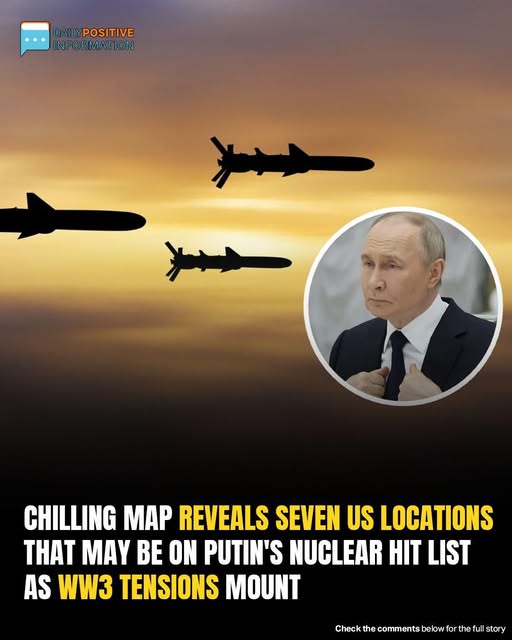Amid growing fears of a global conflict, a leaked map broadcast on Russian state television has raised international alarm. The map reportedly pinpoints seven strategic U.S. sites that could be primary targets in the event of a nuclear strike. Included among them are key military and symbolic locations such as the Pentagon, Camp David, Kirtland Air Force Base in New Mexico, and the Pantex nuclear weapons facility in Texas. Curiously, the map also lists decommissioned sites like McClellan Air Force Base and Fort Ritchie, which suggests either outdated intelligence or an effort to send a broader symbolic message.
The leak comes at a time of heightened global tensions, with the United States continuing to play a central role in multiple international conflicts. The Biden administration’s ongoing military support for Ukraine has drawn fierce condemnation from the Kremlin. Russian officials have accused the U.S. of provoking escalation and pushing NATO toward direct confrontation. Kremlin spokesman Dmitry Peskov recently described American involvement as “reckless,” accusing Washington of crossing the line between aid and direct aggression.
At the same time, conflict between Iran and Israel has intensified, with reports of missile exchanges and claims that Iran has deployed hypersonic weapons in response to Israeli airstrikes. Though the full extent of the damage remains unclear, the use of such advanced weaponry has stirred fears of broader regional destabilization. Environmental experts and global observers have voiced concern over the targeting of sensitive infrastructure, including nuclear facilities, yet there has been little coordinated international response.
While Russia has not engaged militarily in the Middle East conflict, it has voiced unwavering diplomatic support for Iran. Russian Foreign Ministry spokeswoman Maria Zakharova has warned that the world is “dangerously close to nuclear catastrophe,” criticizing what she sees as the West’s complacency in the face of growing global instability. Her comments highlight the increasingly fractured nature of global alliances, where diplomatic loyalties are hardening along ideological lines.
The release of the target map is seen by many analysts as part of a broader strategy to reassert Russian dominance in the global narrative and remind the world of its nuclear capabilities. While few believe an immediate attack is likely, the mere publication of potential U.S. strike zones reflects a chilling return to Cold War-era tactics—where fear and symbolism are used as tools of influence.
Experts caution that the world is entering a dangerously volatile period. The combination of regional wars, great-power rivalry, and provocative rhetoric from all sides is eroding the fragile diplomacy that has prevented nuclear conflict for decades. What once seemed like relics of 20th-century geopolitics—mutually assured destruction, nuclear standoff, and power bloc posturing—are rapidly becoming relevant once again.
In this climate of escalating tensions and fading restraint, the leaked Russian map may not be a declaration of intent—but it is a clear warning. The era of nuclear diplomacy may be entering a new and more perilous phase, and the world is watching, holding its breath.
